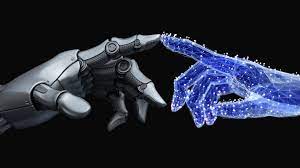"....Now a team of scientists has repurposed living cells—scraped
from frog embryos—and assembled them into entirely new life-forms. These millimeter-wide "xenobots" can move toward a target, perhaps pick up a payload (like a medicine that needs to be carried to a specific place inside a patient)—and heal themselves after being cut."These are novel living machines," says Joshua Bongard, a computer scientist and robotics. "They're neither a traditional robot nor a known species of animal. It's a new class of artifact: a living, programmable organism."
The new creatures were designed on a supercomputer at UVM—and then assembled and tested by biologists at Tufts University. "We can imagine many useful applications of these living robots that other machines can't do," says co-leader Michael Levin who directs the Center for Regenerative and Developmental Biology at Tufts, "like searching out nasty compounds or radioactive contamination, gathering microplastic in the oceans, traveling in arteries to scrape out plaque."
The results of the new research were published January 13 in the Proceedings of the National Academy of Sciences.
And when they stop working—death—they usually fall apart harmlessly. "These xenobots are fully biodegradable," say Bongard, "when they're done with their job after seven days, they're just dead skin cells."
But try cutting it in half. Doesn't work so well. In the new
experiments, the scientists cut the xenobots and watched what happened. "We sliced the robot almost in half and it stitches itself back up and keeps going," says Bongard. "And this is something you can't do with typical machines."To make an organism develop and function, there is a lot of information sharing and cooperation—organic computation—going on in and between cells all the time, not just within neurons. These emergent and geometric properties are shaped by bioelectric, biochemical, and biomechanical processes, "that run on DNA-specified hardware," Levin says, "and these processes are reconfigurable, enabling novel living forms."
Many people worry about the implications of rapid technological change and complex biological manipulations. "That fear is not unreasonable," Levin says. "When we start to mess around with complex systems that we don't understand, we're going to get unintended consequences." A lot of complex systems, like an ant colony, begin with a simple unit—an ant—from which it would be impossible to predict the shape of their colony or how they can build bridges over water with their interlinked bodies.
Much of science is focused on "controlling the low-level rules. We also
need to understand the high-level rules," he says. "If you wanted an
anthill with two chimneys instead of one, how do you modify the ants?
We'd have no idea." UVMtoday
Read more at DutchNews.nl:
Read more at DutchNews.nl:
Read more at DutchNews.nl:


